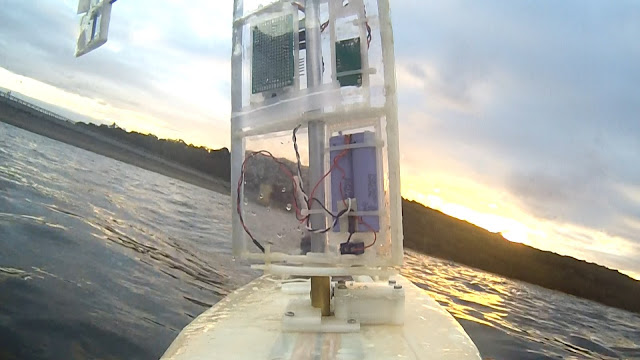New PCB for Bluetooth Sail Controller
The sailing trials continue in fresh water, but the aim is to put to sea.
The electronic systems need a lot of hardening to survive a saltwater environment.
One step in the process is the development of a dedicated PCB for the Wingsail controller.
The new PCB incorporates:
- On-board ATMega328p with the Arduino Pro Mini bootloader, rather than a separate Arduino module.
- Support for a Dual Servo Outputs, although only one is populated.
- Support for switching an auxiliary 5Vdc load. I'm thinking of an LED Strobe or lights to aid night time operations.
- Solar Charging circuitry using the LTC3105, also currently not populated.
The justification for adding solar charging to the Wingsail Controller is not great.
Testing suggests that the Wingsail Controller cells can operate for about 8 days on a single charge. The current Voyager Controller for can only operate for a couple of days in the current configuration. There will be more discussion on that in future posts as efforts are made to improve battery life, prior to engaging solar charging for the vessel.
The competed PCB was sprayed with about a dozen coats of Conformal Coating to provide some protection from the environment.
 |
| The new production Bluetooth Sail Controller PCB with conformal coating and mounted ready for installation in the wingsail. |
Note: This is part of the ongoing development of a low cost autonomous oceangoing sailing drones, utilising a self-trimming wingsail. This is the Voyager series of sailing drones.

No comments:
Post a Comment